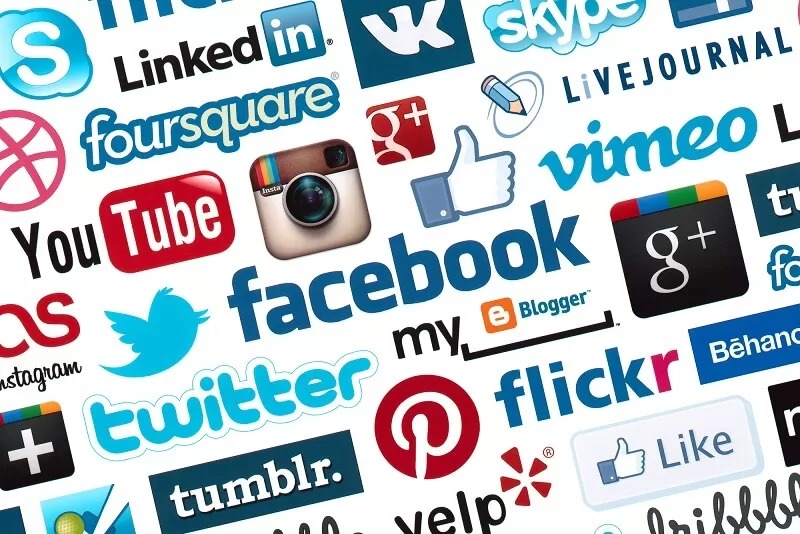
B2B Social Selling Podcast Transcript with Jack Kosakowski
CEO of Creation Agency, a full service B2B marketing agency, Jack Kosakowski joined me on the Future Proof Selling Podcast to talk about Social Selling. As an expert on the B2B seller’s approach to social, Jack shares his insight with us over 30 minutes.
“You’re only going to get so much out of an organic social strategy…which isn’t much these days. How are you going to get the most out of social media?
Step 1 – How do you get visible?
Step 2 – How do you get valuable?
Step 3 – How do you get connected?”
It was great speaking with Jack, listen to the full podcast on my website, or enjoy the transcript below.
Steven: Jack, tell me a bit about what you’re doing with Creation Agency, the niche that you feel there and the sort of challenges that you solve for these SaaS companies.
Jack: What we do is we essentially go into US Division of course, and I’ll talk about the Europe Division as well, but in the US what we do is we usually go into startups, early-stage startups that are at a place where they’ve proven out their model, they know it works, they’ve got a certain amount of revenue, but they just feel they haven’t had any marketing. So what we talk about is we come in and we help you build brand first, brand and then demand, and so we’re your marketing team as a service. Essentially, when you hire us, you get four to five experts for typically the same price you would pay just to hire one marketer, especially in the bigger cities. We come in, we help you with strategy, and then we actually help you implement and run this strategy. So that’s working with you on building out your HubSpot, your marketing automation platform, like Marketo, Eloqua, Act-On, and then we also run all of your social media strategy, everything that has to do with really helping you build brand and build demand and scale your company.
Steven: What part does social play in that? Is that a big portion of what these companies have as part of their marketing mix now?
Jack: It’s getting bigger and bigger, and it’s a vital piece. The thing about a demand generation strategy today is that social is a piece of that: you’ve got organic, paid… If you want to have any success, people have got to start to pony up and understand that they’re only going to get so much out of an organic social strategy, which isn’t going to be much these days. Because these platforms are not built for you to get free business, to a certain extent, from a marketing perspective.

Now, from a sales perspective, that’s a whole different conversation. But at the end of the day, people are looking at you on a whole different level now as buyers, they’re looking at your social channels as your reputation essentially, and it’s a big influence on whether or not they’re going to have a conversation with you, or maybe you’ve created a conversation and you’re down to some competitors and you go “Okay, what do these guys stand for? What are they about? How big are they? Who is talking about them?” There’s just so many unconscious things that are happening today when we buy, that we don’t think about when it comes to our business, from a marketing perspective, and what we need to actually invest to get the deal closed, other than the sales rep just being really good at sales.
Steven: Yeah, absolutely. And I think that goes to how buyers have changed how they buy, and using a lot of these digital channels, social channels to do their research. […] Let’s get to how sales leaders maybe should look at social as well. Because they’re probably not sure how much they should be indexing on that, or letting their folks go down that rabbit hole. So how should they view it, do you think?
Jack: Well, I think we’re getting to a point where you’re either going to understand that social media is going to be your salesperson’s best friend or your company’s worst enemy, with their time. I always laugh when a sales leader says, “Well, my salespeople aren’t really on social,” and I go “Go walk the floor, unexpectedly, and count how many people are closing windows, because they’re on Facebook or they’re on LinkedIn.” I mean, at this point, if you’re a sales leader and you really still think that, I don’t know if there’s much hope for you. [laughs]
So where is the attention of our salespeople is really something to think about. You can’t get them to cold call, a lot of people are having trouble with that these days, where you can’t get them to cold call and do it right. So then what are they good at? A lot of the younger salespeople – Millennials, Gen Zs – they’re really good at social media, but they’re good at it in a way that doesn’t actually help them drive more sales conversations; it just helps them waste time. So you’ve really got to have the come-to-Jesus moment as a sales leader, and go “Okay, I know my salespeople are going to be on social. How do I get them to the point where they understand how to actually use social to move the needle, and help them either create new sales conversations, strengthen existing ones, or influence potential upsells and conversations that are already happening?”
Steven: Yeah, okay. So we’ve got to accept that sales folks are going to be on social, they’re going to be spending time on there. So you’re suggesting it’s better that we embrace that, recognise that, and then maybe just leverage that and get the folks doing it in the right way.
Jack: Yeah. I mean, you’ve just got to teach them how to… It’s a tool, like anything else. It’s funny: how much money do companies invest in cold calling training, but how many of them are actually investing in social, social selling training or social sales training, when actually your people are spending way more time on social than they are on the phone? I’m not saying you don’t equip them with both, but quit fighting something that’s just happening.
Steven: Yes, absolutely. What does a good social strategy look like? Are you going into companies and helping improve profiles, or generating content? What are the components of a good social strategy for a sales group?
Jack: It really depends on the industry: what are you selling, who are you selling to, what channels are these people active on? I think in B2B we’re at a point right now where we all know that LinkedIn is the place you need to be. Optimising your profiles and things like that, that should be common sense, you shouldn’t really need a sales trainer to come on and help you with that; you should be able to review things online and figure that out yourself. I think we’re way past that stage. I mean, if you haven’t already ~implemented that in~ your company, you really need to re-evaluate what the hell is going on with your sales team.
The bigger picture is how do we use different technologies to understand that we have a certain amount of accounts that we’re trying to get into, a certain amount of contacts in those accounts, and how do we actually aggregate all of the insights and activity that people are doing, based on their behaviours, what they’re saying, what they’re interested in, personally and professionally, which is something I talk about a lot, the personal part. Most of us are so ~interjected in~ social on the professional part, that we miss what actually moves the needle when we need to have a conversation, which is the personal part. That’s just as simple as using Sales Navigator. LinkedIn is a very, very tough tool, if you’re trying to do a targeted account strategy, and you’re trying to do it just inside the native platform; it’s almost impossible, you’re just going to be spinning your wheels.
So understanding how to build out… Just like you build email lists, you build call lists, is how do you build out a social list. You do that inside of platforms like Twitter, Sales Navigator, Sprout Social. So I think just having the right tools, and then training your people on how to go about actually getting into the conversation. I have a strategy: how do you get visible is step one, how do you get valuable is step two, and then step three is how do you get connected. The first step in that is who even knows that you exist? Do the right people that you want to have a conversation with know that you exist, outside of just the phone call and the message that you leave on a daily basis or the email that you send? Have you put a face to the voicemail, have you put a face to the email? How have you attracted them to just come look at your LinkedIn profile, just so that when you do make that call, they can at least go “I kind of know you. I’ve read a few articles that you’ve shared,” ~and these kinds of these things~.
And then there’s deeper levels than that – there’s just so much strategy. I mean, social is not an easy thing. I think that’s what people get mixed up on, they’re like “Oh, it’s just social media, this is easy! I can just go ask people for their time and money, because everybody is wanting to give me that!” The funny thing is a lot of people will give you their money, but very few people give you their time, because you’re not doing anything to earn it. Having a social strategy will at least strengthen your chances to be able to be so valuable that somebody actually will give you five minutes of their time.
Steven: […] How do we go about that, getting visible and getting valuable? Because if we’re valuable, we’re going to be attracting customers to us, or if they check us out, they’re more likely to engage. So how does a sales team or a salesperson achieve that?
Jack: Well, being visible just means that you’re active. I think that’s where a lot of salespeople go wrong, is they’re like “Well, I’m not having any success on LinkedIn!” and you go “When was the last time you actually even shared an article to put yourself out there on the platform, so that somebody could go ‘Oh wow, this person even exists!’?” So I think it’s putting yourself out there in the beginning, and there’s certain content strategies, ~and that doesn’t mean you have to~ create your own content.
Getting valuable is a little bit different, I would say that that’s more where creating content that actually connects with people at a level where you’re giving them massive value, personally and professionally, over everybody else, kind of going into an expert phase. But being visible is just about how much are you sharing per day? What are you sharing? The same thing that everybody else has been sharing is not going to work, you’re still going to have a crappy outcome. So it’s really thinking about “What am I sharing that nobody else is sharing? What am I sharing that would make somebody ~stop their feet~ [pause?] and go “Oh, I want to read that,” and then go “Wow, this person consistently shares really good information that’s really going to help me, personally and professionally!” That’s where you move to the second phase, ~which is value~.
Steven: Yeah, right. Do you think value is creating our own content, is that what you’re saying is the next level?
Jack: Well, it’s not just creating content. Because a lot of salespeople aren’t going to be able to create content, I get that. Value comes down to how do you become an advocate? When you do see that your buyer has an upcoming webinar, if you’re selling to marketers for example, and you go and you share that on LinkedIn and you share that on Twitter, you tag them and say, “Hey, this is an awesome webinar that’s coming up!” So there is that, how are you actually helping somebody else on a personal and professional level.

I’ll give you an example, and you have to do this with the right motive. Just keep in mind that I’m a motive guy, so I’m going to give you ideas. Let’s say that you’re going after a CEO, and you find out that this son has cerebral palsy, and he’s trying to raise money, he wants to raise for this thing that he’s really, really passionate about that maybe affects his kids. Why would you not want to donate to that and share that and just let him know that you actually do give a shit? You’re going to be trying to sell to them anyway, because he’s on your call list, but what are you doing outside of the scope to really go that extra step that no other salesperson is? That’s what value is, and there’s so many different examples of value.
But I think the toughest part, and this is where sales reps fail, is that value means you’re doing something that you’re getting nothing in return for [laughs], and it’s only the other person on the other end that benefits, and you have to get really creative in order to make that happen. That’s where you get out of your own way, and actually understand that selling sometimes is actually not about selling, it’s actually the opposite, and there’s many strategies on social media that give you insights into what is actually valuable to somebody, personally and professionally.
Let’s use you as an example. If I was going to reach out and I was going to prospect you… You wrote a book, Future Proof Sales Strategy. My thinking behind that, and I’m just going to give you a real-life example and I’m just coming up with this as we speak, is I would have gone and bought your book, I would have done some research and seen that you’re an author. I would have bought your book, left you a hell of a review, and then sent you a message, just highlighting the key points and to say, “Hey man, I bought your book, I’ve just left you this glowing review, and I just wanted to let you know that in the seven steps there’s one step that I was missing, and here’s how it affected my life.” That might have been the bridge to conversation, without asking you for your time. Because I’m pretty sure that with the right motive, it would be pretty easy to get your time after going through that process. [laughs]
Steven: Yeah, absolutely – I think that’s a great example.
…We leave the interview there for now. Follow the link to listen to the full 30 minute podcast.
Listen to the complete Podcast with Jack Kosakowski.
Leave me your comments!



